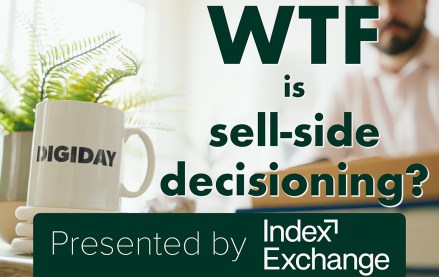Disney is using brand-safety concerns to push its family-friendly media

Disney owns some of the most premium online content to advertise on, but it hasn’t tried to fully capitalize on it until now. After restructuring its sales team, trimming its Maker Studios influencer business and launching its own ad network in recent months, the media conglomerate is making its biggest push yet for digital ad budgets.
Disney’s commercial executives are pitching advertisers and agencies the Disney Digital Network, a combination of all its online assets that can be bought either on its own ad network, influencer partnerships or branded-content deals. Meetings have happened since DDN launched in May, as the company looks to grow a small but lucrative part of its consumer products and interactive business. Advertising accounted for just 2 percent — $130 million — of the division’s total revenues last year.
The creation of Disney’s own ad network is arguably the clearest indicator of how the company will attempt to win ad budgets. Similar to publisher alliances like Pangaea, Disney wants marketers to see it as a premium, more transparent alternative to the scale of Google and Facebook.
By running its own ad network, Disney can control its own data and reduce its reliance on third parties and, more important, third-party fees. It functions like a traditional ad network, handling the placement, optimization and reporting on ads once Disney and the buyer have negotiated a fee. Much of what is sold via the network is ads on its apps and pre-roll video before its content on social networks, particularly on YouTube. The Google-owned video site represents a sizable part of the 400 million monetizable video views that Robbie Douek, vp of digital partnerships for Disney in Europe, the Middle East and Africa, said the DDN can generate for brands. Display, however, is a “small portion” of what gets sold, he added.
Targeting audiences online will be “contextual” rather than hypertargeted for Disney’s advertisers, said Douek, meaning the ads Disney sells, at least initially, will be targeted based on relevancy to page content. Douek said he could revisit sharper targeting at a later stage, however. Some media observers say the company has been too cautious, which they feel its lack of data targeting underscores. For now, Douek said the commercial team is focused on “looking at specific audiences that are associated with specific franchises” when helping advertisers plan campaigns.
In-house technology, however, is not always a panacea for transparency, said Bill Swanson, vp for Europe, the Middle East and Africa at PubMatic, a company that makes money from working with publishers that can’t afford to build their own in-house technology. “[Marketers] may relieve their anxieties about appearing next to inappropriate content, but what about fraud?” he said. “Even the most premium publishers today are victims of domain spoofing, something that can be alleviated by using verification technologies.”
Disney also expects its influencers to woo advertisers, though Douek acknowledged the difficulties of building an influencer business in a crowded market. The company has struggled to grow Maker Studios since acquiring it in 2014 for more than $500 million. Earlier this year, Disney streamlined Maker Studios, then pulled it into its consumer products and interactive division. Turning Maker Studios from a standalone unit into part of a broader pitch for digital budgets is expected to help Disney recoup some of the money it undoubtedly lost. In addition to pitching those influencers to brands, Disney will offer opportunities for Maker Studios creators to appear in its TV shows, as well as join the rebooted online version of its “Mickey Mouse Club” series.
Disney’s move into online advertising has been a long time coming. After struggling to get its online business started since acquiring Maker Studios, the media outlet is hopeful the brand-safety crisis can help cement its position as a trusted publisher.
“Brand safety comes up a lot when we’re talking to advertisers,” Douek said. “That’s why in the world we’re living in today, the players that are going to shine through are those who sit on the content.”
More in Media

WTF is sell-side decisioning?
With programmatic processes speeding up, publishers and SSPs can do more merchandising of impressions before they are put up for auction through sell-side decisioning tactics.

Media Briefing: Reddit becomes a more noticeable source of publisher traffic
As generative AI eats into search traffic, publishers are increasingly turning to platforms like Reddit to drive audiences to their sites.

Epic aims to boost originality in Fortnite’s creator ecosystem
Creators believe new Fortnite updates, including a moderation “similarity score,” will help fix the platform’s persistent copycat issues.








